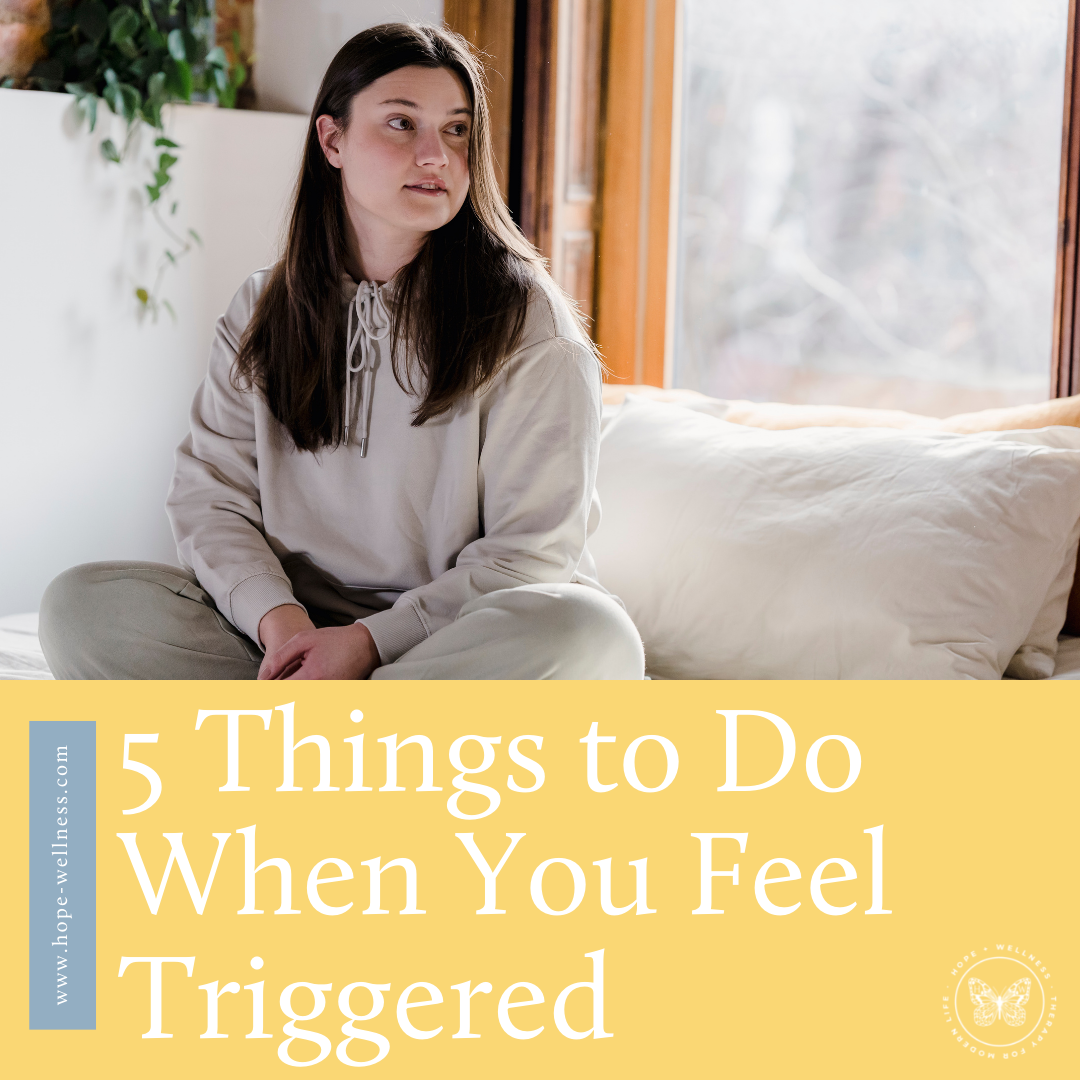
Hope +Wellness Blog
little snippets of advice for everyday challenges many people share

Understanding Your Window of Tolerance
One way to help understand what’s happening when your emotions feel out of control is through the window of tolerance model. We all have ranges, or windows, of what we’re able to tolerate psychologically. In some states of mind, we’re better able to cope and regulate our emotions than others.

How to Make the Most of Your Time Between Sessions
Therapy can be a powerfully transformative process and an integral part of our support system, but going to therapy isn’t where the work starts and ends. In session, you’re able to do deep emotional work and get tools to help support you while you’re out of session, but that out of session work is just as important as what you do while you’re there with your therapist!

5 Ideas for Starting a Self-Development Practice
Wanting to improve doesn’t mean you didn’t like who you were before. It can mean that you want to give yourself new experiences, you believe in your abilities, or even that someone inspired you to do things differently. Whatever your reasons, There are some simple steps you can take to start a self-development practice.

7 Ways to Spend Your Time for Better Mental Health
How we spend our time can be a huge contributor to our health, both mental and physical. It’s important to spend our time in ways that nourish and take care of ourselves (both in our body and in our mind) as well as provide balance so we’re not just treating ourselves like machines who don’t need variation.

6 Things to Do When You Make a Mistake
Mistakes are going to happen, so having a plan in place for what you’ll do when you make a mistake can help guide you through those painful moments. If you’ve made a mistake, here are 6 things you can do.

Emotional Exhaustion: What Is It & What Can You Do About It?
When you hit that point of emotional exhaustion, it doesn’t just impact your energy level or mood. It also can impact things like your relationships, your ability to engage in your hobbies, your professional performance, your patience level, your self esteem, and even your problem solving skills.

5 Ways to Deal With Being Ghosted
Many of us have negative beliefs about ourselves, whether we realize it or not. There’s even a name for that critical voice in your head that reinforces those mean thoughts: the inner critic. This inner critic might tell you that you’re not loveable or not good enough. Being ghosted can reinforce those beliefs, even though they’re false.

Gentle Movement Tips for A Healthier Relationship with Exercise
If you’ve had a history of disordered eating or disordered exercise habits, or just a difficult relationship with your body in general, the idea of establishing a new routine might feel a little scary. If that’s the case for you, here are 5 tips for working gentle movement into your routine in a way that works for you!

5 Things to Do When You Feel Triggered
An intense emotional reaction can be distressing. It’s a lot of work, mentally and physically, to be upset, and when a trigger comes seemingly out of nowhere, it can really throw you for a loop. Although a trigger can be unavoidable, there are ways you can be more prepared when they come up, so you’re not left in so much distress each time. Here are some ways to cope when you feel triggered.

How to Be There for A Friend with Chronic Pain
If you don’t experience chronic pain, it can be hard to understand just how much it can impact someone’s life. While for most people, pain is unusual, a sign that something needs to be tended to immediately, for folks who manage chronic pain, it is a constant state. If you’re looking for ways to support a loved one with chronic pain, here are 6 ways to be there for them.
Hope+Wellness is a mental health practice specializing in the treatment of depression, mood, stress, and anxiety in kids, teens, and adults. This is a blog about living well and finding meaning and purpose in the face of difficult challenges. This is a blog about finding hope.
Archive
- ACT
- ADHD
- Acceptance
- Anxiety
- Authenticity
- Belonging
- Bipolar
- CBT
- Calming
- Change
- Chronic Illness
- Chronic Pain
- Communication
- Community
- Coping Skills
- DBT
- Dating
- Depression
- EMDR
- Emotions
- Entrepreneurs
- Friendship
- Gratitude
- Grief
- Health Psychology
- Hope
- Inspiration
- Intimacy
- Intuition
- Joy
- Letting Go
- Love
- Manic Depression
- Mindfulness
- Miscarriage
- OCD
- Parenting
- Personal Growth
- Positive Vibes
- Quotes
- Relationships
- Resources
- Self-Compassion
- Self-Reflection
- Services
- Sleep
- Spirituality
- Stress Management
- Stress Relief
- Suffering